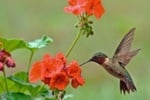MENDOCINO NATIONAL FOREST
MENDOCINO NATIONAL FOREST825 N. Humboldt Avenue
Willows, California 95988
Email:

The only one of California's 18 national forests not crossed by a paved road or highway, the Mendocino National Forest is especially attractive to people seeking an outdoor experience of tranquility and solitude. The Forest is approximately 65 miles long and 35 miles across, consisting of one million acres of mountains and canyons which offer a variety of recreational opportunities- camping, hiking, backpacking, boating, fishing, hunting, nature study, photography, and off highway vehicle travel.
Thousands of years before pioneer explorers from the eastern United States entered the area, five Native American peoples lived off its bounty - the Yuki, Nomlaki Wintu, Patwin Wintu, Eastern Pomo, and Northeastern Pomo. Archaeological artifacts and records from more than 1,800 sites have told us a number of things about the distant past of these peoples, but we have much more to learn.
Between 1850 and 1900, many small sawmills operated within what are now the Forest Boundaries. Mining also played a role in the history of the area. Copper City and Pacific City, now just place names on the map, were mining communities before the turn of the century. Most mining activity was limited to exploration for copper in the late 1800's, completely disappearing before 1900. During World War II, responding to the needs of the war industry, miners re-entered the Forest to do exploratory digging for manganese and chrome.
The minerals that attracted most people, however, were the ones dissolved in waters of the Forest's gurgling, steaming hot springs. During the early 1900's, visitors would travel many miles to soak up the supposed health benefits of baths in several resorts and spas. You can see remains of three resort hotels, mineral baths, and a bottling plant for mineral water at Bartlett Flats. Fouts Springs, Hough Springs, and Allen Springs also boasted popular resort facilities, although little evidence of their buildings remains.
First set aside as a "forest reserve" by President Roosevelt in 1907, it was originally named the Stony Creek Reserve, followed by the Stony Creek National Forest, and later the California National Forest. This designation proved to be confusing with relation to the state itself, and President Herbert Hoover renamed it the Mendocino National Forest on July 12, 1932. Mendocino takes its name from Mendocino County which was named for Cape Mendocino in Humboldt County. In 1542 explorer Roderiques de Cabrillo named the cape in honor of Don Antonio de Mendoza, first viceroy of New Spain.
Day-UseFishingyes
Huntingyes
Hiking Trailyes
Picnickingyes
Mendocino National Forest is
Grindstone Ranger District has both the highest and lowest points on the Forest (Mount Linn, in the Yolla Bolly - Middle Eel Wilderness at 8092 feet and Grindstone Creek at 720 feet as it leaves the Forest). It also shares the other two Districts' highest points.
Covelo Ranger District's highest point is Solomon Peak (7581 feet) in the Yolla Bolly - Middle Eel Wilderness on the District Boundary with Grindstone Ranger District; the lowest points are at 1480 feet, where the Middle Fork Eel and Black Butte Rivers leave the Forest near their confluence.
Upper Lake Ranger District's highest point is Snow Mountain West (7038 feet) in the Snow Mountain Wilderness, on the District Boundary with Grindstone Ranger District; the lowest point is 1480 feet, where Elk Creek leaves the Forest.
The waters of the Mendocino flow to the Pacific Ocean, westward through the Eel River system, and eastward through the Sacramento River system to San Francisco Bay.
All of the Ranger Districts have a wide variety of wildflowers that bloom at various times through spring and summer: California poppy, penstemon, shooting stars, wild iris, milkweed, Indian paintbrush, buttercups, dogwood, wild lilac, and many varieties of lupine. Vegetation types include mixed conifer forests, oak woodlands and savannah, chaparral, annual and perennial grass glades, and wet meadows.
The Districts also share many species of wildlife in common, including black-tailed deer, black bear, mountain lion, bobcat, coyote, skunk, jackrabbits, oppossum, badger, gray squirrel, ground squirrel, rattlesnakes, gopher snakes, lizards, toads, pacific tree frog, quail, wild turkey, blue grouse, golden eagle, spotted owl, goshawk, prairie falcon, peregrine falcon, bald eagle, turkey buzzard, scrub jays, woodpeckers and a variety of migratory water and song birds. Upper Lake Ranger District has a small population of tule elk. Salmon and steelhead spawn in streams of the Covelo and Upper Lake Ranger Districts, and rainbow trout, western pond turtle, and yellow-legged frog live in and around many of the streams of each of the three Districts.
Lake Pillsbury, the only sizable lake on the Mendocino National Forest, is a popular attraction on Upper Lake Ranger District. Howard and Hammerhorn Lakes on Covelo Ranger District, and Letts and Plaskett Lakes on Grindstone Ranger District range in size from 3 to 13 acres, and are locally popular for camping and fishing. Yolla Bolly - Middle Eel Wilderness is shared by the Covelo and Grindstone Ranger Districts, and Snow Mountain Wilderness is shared by Grindstone and Upper Lake. Travel times to the major trail heads range from three to six hours from the San Francisco Bay Area, including one to two hours on dirt roads. Both Grindstone and Upper Lake Ranger Districts manage a system of off-highway vehicle trails that are recognized by users and environmentalists as a model for quality, environmentally sound Off-Highway Vehicle recreation.

BBs / Inns
Close to Calistoga, Napa Valley and Lake County Vineyards, and Harbin Hot Springs in the Mayacama Mountains, and 2 hrs away from San Francisco or Sacramento. Backyard Garden Oasis is an exquisite respite for those wanting a nature-filled retreat surrounded by some of Californias most beautiful country.
54.9 miles from park*
The Mendocino National Forest straddles the eastern spur of the Coastal Mountain Range in northwestern California, just a three hour drive north of San Francisco and Sacramento.


